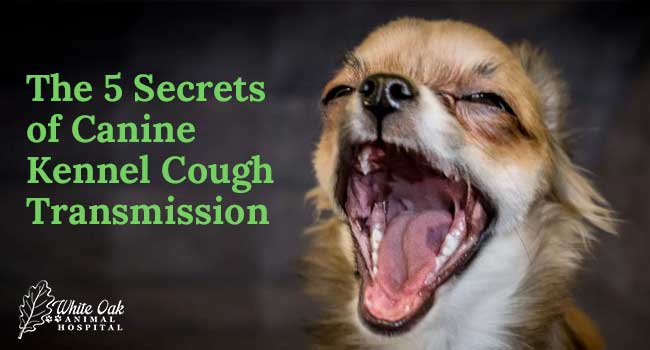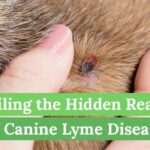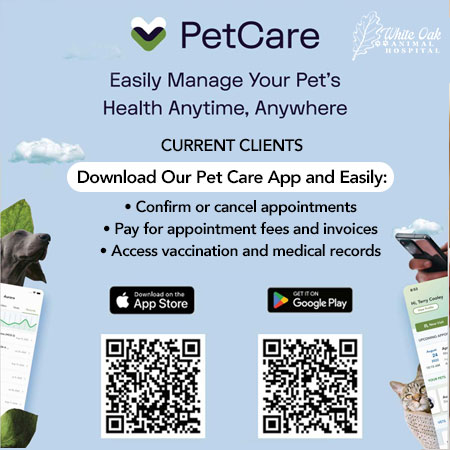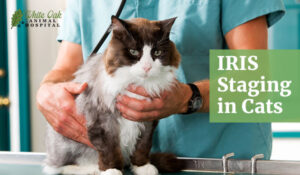Canine Kennel Cough, scientifically called canine infectious tracheobronchitis, is a remarkably contagious respiratory ailment within the canine realm. This insidious condition often takes root in places of canine congregation, such as bustling dog boarding kennels, lively dog daycare centers, spirited dog parks, dog training groups, and the lively stages of dog shows. The transmission of this ailment transpires through the exchange of airborne droplets, casual snout-to-snout greetings, or even a mere brush against contaminated surfaces like communal water and food bowls.
It’s noteworthy that the brunt of this ailment tends to be milder in healthy adult dogs, yet it can cast a more ominous shadow over young pups below the tender age of six months or dogs with compromised immune systems. However, the excellent news rests in the realm of treatment, as most resilient adult dogs tend to bounce back from this ordeal with proper care, while vigilance remains critical for the more vulnerable members of our furry family.
This contagious respiratory condition predominantly surfaces in areas where dogs gather in groups, such as bustling dog daycare facilities or communal parks. The disease’s proclivity for inconspicuous transmission through airborne droplets or casual nose-to-nose interactions prompts owners to remain vigilant. The health and safety of their cherished companions prompt dog owners to adopt proactive measures against this potential ailment. In the realm of dog-owner relationships, the defense against the risks posed by Canine Kennel Cough assumes significant importance.
Canine Kennel Cough’s Secret #1: Modes of Transmission
Delving into the intricate fabric of Canine Kennel Cough reveals a vital facet – its modes of transmission. This highly contagious ailment, also known as canine infectious tracheobronchitis, unfolds through a multifaceted interplay of factors. Central to this process is the close interactions dogs engage in, be it through casual nose-touching or the sharing of toys, which act as primary conduits. Airborne particles carrying the ailment’s agents traverse the spaces where dogs congregate, facilitating rapid dispersion.
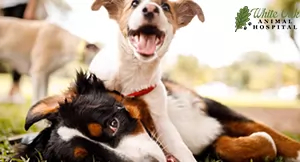 The effortless manner in which Kennel Cough traverses environments serves as a stark reminder of the susceptibility of dogs across various settings – from bustling kennels to spirited dog parks. This intricate manner of transmission underscores the vital need for vigilance among dog owners, given that even seemingly friendly encounters can harbor concealed risks.
The effortless manner in which Kennel Cough traverses environments serves as a stark reminder of the susceptibility of dogs across various settings – from bustling kennels to spirited dog parks. This intricate manner of transmission underscores the vital need for vigilance among dog owners, given that even seemingly friendly encounters can harbor concealed risks.
Understanding how Kennel Cough spreads helps us see how dogs can pass it to each other through close contact, the air, and the things they touch. This info helps dog owners be more careful in places where their dogs might catch it. Taking these precautions is an important part of being a responsible dog owner and keeping our furry friends healthy and safe.
Canine Kennel Cough’s Secret #2: Ideal Environments for Transmission
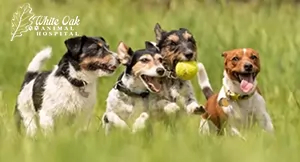 In the intricate realm of this highly contagious ailment particular environments serve as incubators for its propagation. These settings prominently include areas characterized by the dense congregation of dogs, fostering frequent and intimate interactions. Notably, vibrant dog parks, bustling kennels with canine activity, and bustling grooming facilities all fall within this domain.
In the intricate realm of this highly contagious ailment particular environments serve as incubators for its propagation. These settings prominently include areas characterized by the dense congregation of dogs, fostering frequent and intimate interactions. Notably, vibrant dog parks, bustling kennels with canine activity, and bustling grooming facilities all fall within this domain.
Within these vibrant and bustling environments, Canine Kennel Cough finds the perfect stage for its transmission strategies. Various contributing factors amplify its spread, such as inadequate ventilation, which grants the disease-laden particles extended existence and allows them to drift among unsuspecting canine companions. Moreover, stress emerges as a surreptitious collaborator, undermining the immune defenses of our cherished canine companions, thus heightening their susceptibility to the ailment’s encroachment.
The way these things work together shows how important it is to understand the connection between how it spreads and certain places. Fun dog parks where dogs play a lot, busy kennels with lots of activities, and places like grooming spots where dogs meet up can be places where it spreads. Getting how this all fits together helps dog owners know how to be careful in these places, taking steps ahead of time to keep their furry friends safe from Canine Kennel Cough.
Canine Kennel Cough’s Secret #3: The Role of Common Causes
In the realm of canine health, several factors shape the conditions for this ailment to take root. Stress and weakened immune systems emerge as significant contributors, their roles closely intertwined with a dog’s vulnerability to the disease. This intricate interplay unfolds against the backdrop of how the ailment spreads.
Stress, an elusive yet impactful element, emerges as a potent trigger that can weaken a dog’s defenses, paving the way for Kennel Cough to establish a foothold. Similarly, immune systems that are not operating at their peak become openings through which the disease can exploit. These factors, when working in conjunction, form a synergy that facilitates the transmission of Kennel Cough.
 This interdependent relationship between stress, immunity, and susceptibility provides insight into how the disease finds the conditions it needs to thrive. As stress accumulates and immunity wanes, the stage is set for Kennel Cough to seize the opportunity, exploiting a dog’s vulnerabilities. Understanding this connection not only sheds light on the path of infection but also empowers dog owners with the knowledge to bolster their pets’ defenses against this airborne menace.
This interdependent relationship between stress, immunity, and susceptibility provides insight into how the disease finds the conditions it needs to thrive. As stress accumulates and immunity wanes, the stage is set for Kennel Cough to seize the opportunity, exploiting a dog’s vulnerabilities. Understanding this connection not only sheds light on the path of infection but also empowers dog owners with the knowledge to bolster their pets’ defenses against this airborne menace.
Canine Kennel Cough’s Secret #4: Recognizing Symptoms and Warning Signs
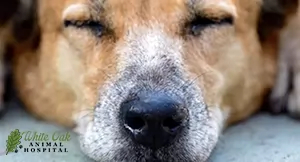 A consistent, harsh cough is the foremost sign, a sound that echoes like a dog’s alert. Alongside this, frequent sneezing and a runny nose mark the disease’s impact on a dog’s breathing. Lethargy, a sense of tiredness and lack of energy, often comes with these visible symptoms. It’s a set of signs that, when combined, create a story of potential Kennel Cough. Understanding the importance of these symptoms is vital – they serve as an alarm, a call for quick attention and care.
A consistent, harsh cough is the foremost sign, a sound that echoes like a dog’s alert. Alongside this, frequent sneezing and a runny nose mark the disease’s impact on a dog’s breathing. Lethargy, a sense of tiredness and lack of energy, often comes with these visible symptoms. It’s a set of signs that, when combined, create a story of potential Kennel Cough. Understanding the importance of these symptoms is vital – they serve as an alarm, a call for quick attention and care.
Noticing these symptoms immediately is crucial in the fight against Canine Kennel Cough. Being aware as a dog owner is a strong defense, allowing for quick action and seeking help from a vet. The quicker the symptoms are spotted, the better the chances of stopping the disease from getting worse and lessening its impact.
In the world of responsible dog care, the ability to spot these symptoms is a valuable skill. The distinctive cough, the repeated sneezing, the continuous runny nose – each speaks of a possible health issue. Understanding this language, noticing its details, and responding right away can make a big difference.
Canine Kennel Cough’s Secret #5: Prevention and Protection Strategies
This infectious respiratory adversary can be held at bay through strategic measures. Think of vaccinations as a dog’s tutor, teaching its immune system how to battle the ailment if it dares to approach. These vaccines not only shield from the disease but also help soften its impact if it manages to sneak past. However, we don’t recommend the Bordetella vaccine for every pet. Ask us at your next appointment if this vaccine is right for you. You may not need it depending on what your dog is exposed to.
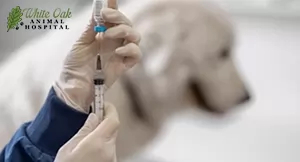 Hygiene practices are the unsung heroes in this saga. Regular cleaning of shared spaces and belongings acts as a virtual eraser, wiping away traces of the disease. Handwashing becomes a formidable ally, a simple yet potent ritual that washes away potential harm. Avoiding contaminated areas serves as a tactical maneuver, diminishing the odds of encountering the agents of Kennel Cough.
Hygiene practices are the unsung heroes in this saga. Regular cleaning of shared spaces and belongings acts as a virtual eraser, wiping away traces of the disease. Handwashing becomes a formidable ally, a simple yet potent ritual that washes away potential harm. Avoiding contaminated areas serves as a tactical maneuver, diminishing the odds of encountering the agents of Kennel Cough.
Piecing together the puzzle of prevention, we find that the synergy of vaccination and hygiene forms a robust strategy against Canine Kennel Cough. It’s like a fortress enveloping a dog, a defense mechanism that makes it a less hospitable host for the ailment. These tactics, when united, craft a dual-layered shield – an invisible guardian against an elusive adversary.
As we conclude our exploration of Canine Kennel Cough, we’ve revealed its modes of transmission, favored environments, common causes, and recognizable symptoms. Stress and compromised immune systems play a role in its development, urging us to take preventive measures. Recognizing symptoms like coughing and nasal discharge empowers early intervention. Vaccinations and hygiene practices stand as shields against its spread.
 We urge dog owners to stay vigilant, consider White Oak Animal Hospital for care, and spread awareness. Our united efforts create a safer canine community. Let’s remember, that understanding and action are the keys to minimizing Canine Kennel Cough’s impact, ensuring our furry companions live their happiest, healthiest lives.
We urge dog owners to stay vigilant, consider White Oak Animal Hospital for care, and spread awareness. Our united efforts create a safer canine community. Let’s remember, that understanding and action are the keys to minimizing Canine Kennel Cough’s impact, ensuring our furry companions live their happiest, healthiest lives.
Related Posts
-
Understanding Canine Distemper: Learn 5 Important Facts to Keep Your Dog Safe
Canine Distemper is a highly contagious viral disease that poses a significant threat to the…
-
Unveiling the Hidden Realities of Canine Lyme Disease: Uncover the Silent Threat and Protect Your Furry Friend with 5 Key Strategies
Understanding Canine Lyme disease is vital for the well-being of your furry friend. Lyme disease,…

